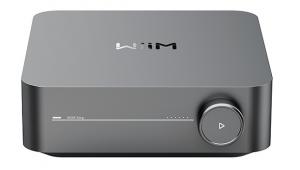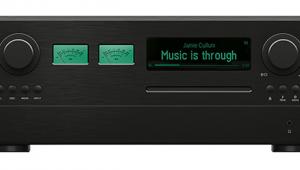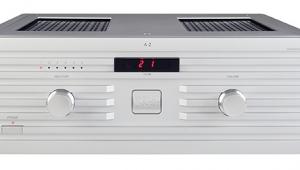Rotel Michi X5 Integrated Amplifier The X Factor
Is the X5 simply a 'bigger X3'? The X5's extra bulk comes from its chunkier chassis, dual PSU transformers and mammoth 22,000µF slit-foil reservoir caps. It hosts the same six pairs of Sanken bipolar output devices per channel as the X3 but, with the enhanced PSU, supports a higher rated 2x350W/8ohm vs. 'just' 2x200W/8ohm for the X3. In reality, while the X5 bests the X3 into 8/4ohm loads at 2x450W vs. 2x255W and 2x775W vs. 2x425W, respectively, it proves less tolerant of low impedances. Despite its extra heatsinking, thermal protection limits the X5 to 1150W/2ohm and 590W/1ohm (24.3A) where, under dynamic conditions, the X3 powers on to deliver 1080W/2ohm and 1775W/1ohm (42.1A). So the Michi X3 still has more grunt than any integrated in this class.
This, of course, is not the end of the story because there are other differences in the technical 'fingerprints' of the X3 and X5 that inform their very individual sound qualities. For example, the X5's gain is twice that (+6dB) of the X3 and while midrange distortion is slightly higher (0.005% vs. 0.003% at 10W/8ohm), it is more consistent (flatter) with frequency than via the X3 where THD increases to 0.014%/10kHz (vs. 0.005%/10kHz via the X5). The X5's response, however, is markedly less flat than the X3's, the former sloping downwards from 4kHz-20kHz by –0.8dB while the X3 reaches out to –0.15dB/20kHz. This subtle tilt in response alone feeds into Andrew's description of the X5 sounding 'darker'.
There's further 'darkening' in the digital domain for while both the X3 and X5 use an AKM AK4495SEQ DAC, the former uses a steep roll-off minimum phase digital filter, the latter a slow roll-off minimum phase filter with much reduced ringing but poorer stopband rejection (just 5.3dB vs. 69dB). The X3/X5 post-DAC analogue stages are different but the responses are heavily influenced by the digital filters, so a 44.1kHz file rolls away to –4.9dB/20kHz through the X5 but remains flat to ±0.05dB/20kHz via the X3. PM

























































